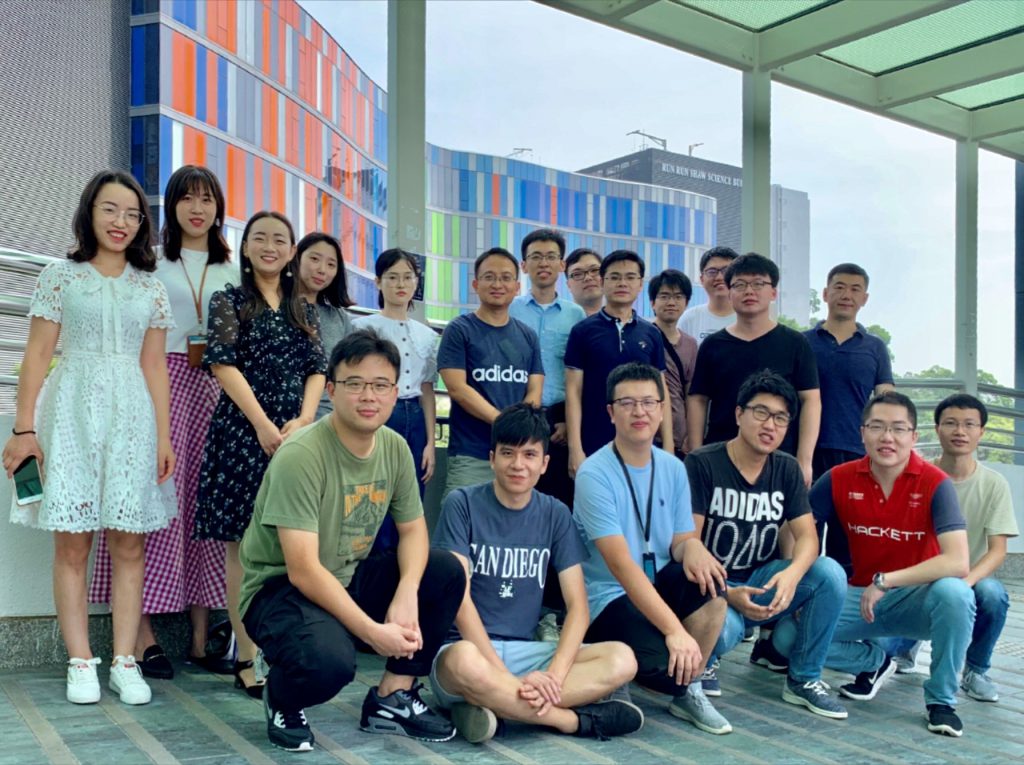CUHK
News Centre
CUHK Engineering Research Team Develops Novel Nanoprobes to Monitor Parkinson’s Disease and Possibly Slow Deterioration
A collaborative research team led by Professor Liming Bian, Department of Biomedical Engineering, Faculty of Engineering, Professor Wing-Ho Yung and Professor Ya Ke, School of Biomedical Sciences (SBS), Faculty of Medicine at The Chinese University of Hong Kong (CUHK) has pioneered the development of novel nanoprobes that can monitor the progress of Parkinson’s disease (PD) and could be useful in treatment for this brain disorder. The results have been published recently in the ACS Applied Materials and Interfaces, an international journal published by the American Chemical Society.
PD is one of the major neurodegenerative disorders and mainly affects the elderly. It can be divided into the idiopathic type and those with secondary causes. Most cases are idiopathic, triggered by impaired functions of the nervous system in the brain, leading to the depletion of a neurotransmitter called dopamine. The PD symptoms of tremor, stiffness and sluggishness occur when there is not enough dopamine in the brain to transmit messages from nerve cells to the muscles. At this stage, there is still no unanimous conclusion on its clear cause.
Accumulating evidence has shown that large amounts of matrix metalloproteinases (MMPs) contribute to the pathogenesis of PD. Specifically, MMP3 triggers neuroinflammation in response to dopaminergic neuron apoptosis and causes PD symptoms. Researchers have found that the administration of MMP3 inhibitors can reduce inflammatory microglia activation and dopaminergic neuron death, indicating that MMP3 can be an effective early PD biomarker and target for clinical interventions. Professor Liming Bian believes that if a multifunctional nanoprobe is used to indicate and inhibit the abnormal activity of MMP3 in the brain, the symptoms of PD and other neurodegenerative diseases can be detected early, and the deterioration from the disease can be delayed in the early stage.
Development and application of the multifunctional nanoprobes
One of the major challenges in treating PD is to effectively detect and inhibit the early MMP3 activities to relieve the neural stress and inflammation responses. In early 2018, a PhD student Rui Li and a postdoctoral fellow Dr. Jinming Li from Professor Liming Bian’s laboratory jointly developed an enzyme responsive nanoprobe to detect the biomarkers in neurodegenerative diseases. It is described in full as an upconversion nanoparticles (UCNP)-peptide-aggregation-induced emission luminogen (AIEgen). In the next few years, the research team collaborated with Professor Wing-Ho Yung, Professor Ya Ke and Dr Yi Li to fabricate and optimise the UCNP-peptide-AIEgen nanoprobe tailoring it to monitor PD biomarker activities and test the effects of delivering therapeutic agents at the same time. After successful laboratory verification, Professor Yuk Wai Lee from the Prince of Wales Hospital joined the team to further validate the reporting efficiency of the MMP3-responsive nanoprobes in a mouse PD model. The team found that PD mouse brains injected with the UCNP-peptide-AIEgen nanoprobe exhibited a strong fluorescent signal under excitation, enabling the real-time detection of MMP3 activity for the first time in living animals and making that useful in monitoring cellular stress and inflammatory responses at early-stage PD. These results not only provide new tools to monitor PD progression but also open an opportunity to establish novel therapeutic strategies to treat PD and other neurodegenerative diseases.
“The research team will focus on improving the functions of the nanoprobe and loading more effective therapeutic agents to achieve the best result in the treatment of neurodegenerative diseases, and exploring its clinical applicability,” said Professor Liming Bian.
Professor Wing-Ho Yung said, “PD is just one of many neurodegenerative diseases that affect the brain. We hope this technology will also be able to be applied to other brain diseases.”
This work was supported by the National Natural Science Foundation of China, Health and Medical Research Fund, General Research Fund, HK Research Grants Council, the Chow Yuk Ho Technology Centre for Innovative Medicine and the Gerald Choa Neuroscience Centre, CUHK.

The design rationale of the UCNP-peptide-AIEgen nanoprobe for the detection and inhibition of biomarkers in PD models. Under the near-infrared detection laser, the reporting unit detects the inflammation in the deep brain by the MMP3-triggered fluorescence emission. Meanwhile, the nanoprobes deliver the therapeutic regents into the neuron cells to inhibit further neurodegeneration. The unique features of the nanoprobe platform provide new insights for the treatment of neurodegenerative diseases.







